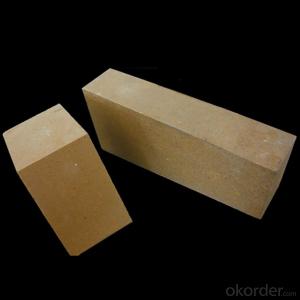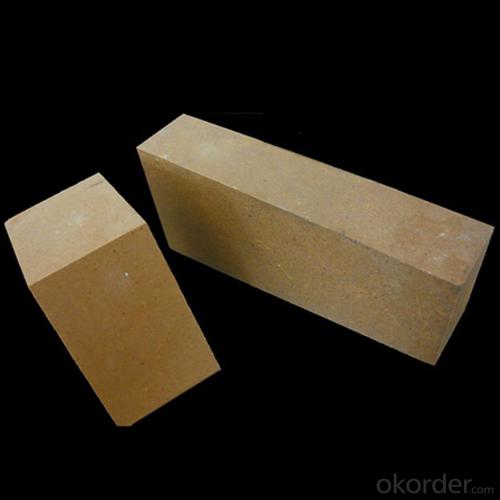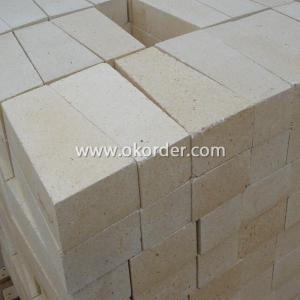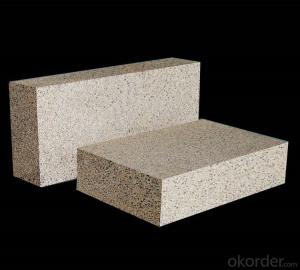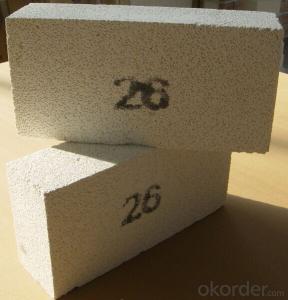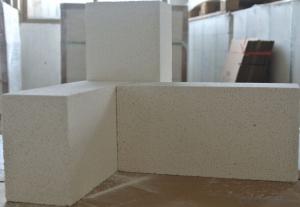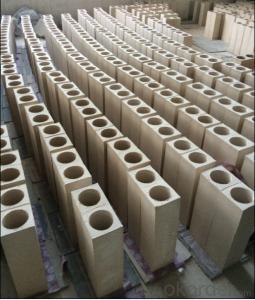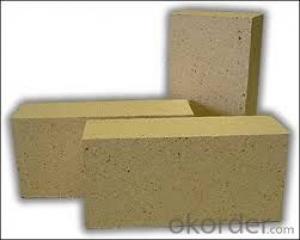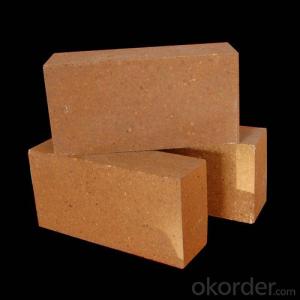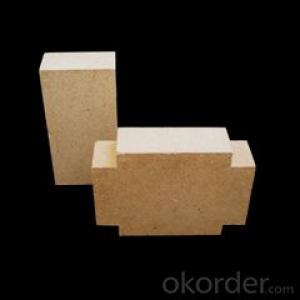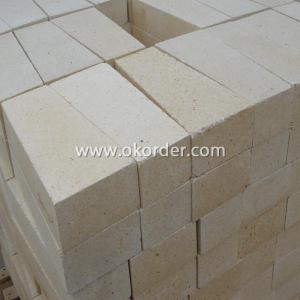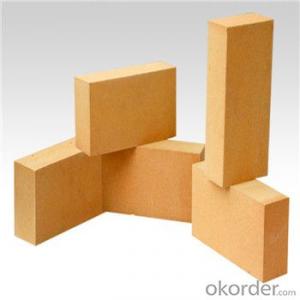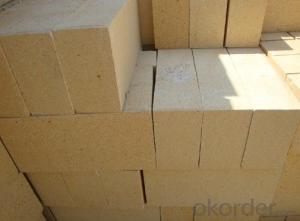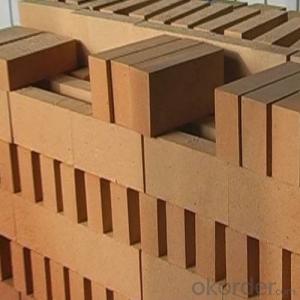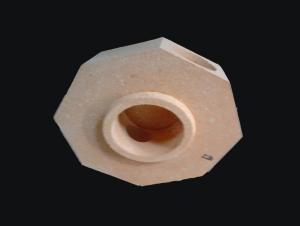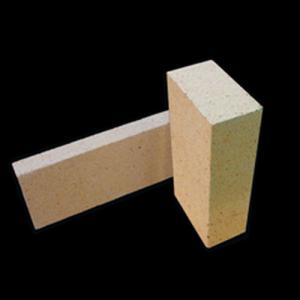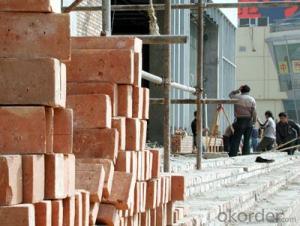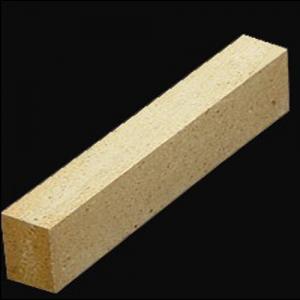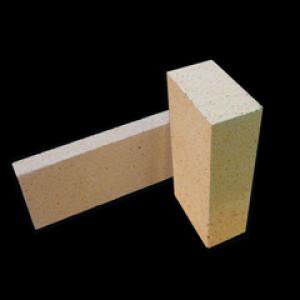Fireclay Brick - Refractory RN40 Low Apparent Propensity
- Loading Port:
- Tianjin
- Payment Terms:
- TT OR LC
- Min Order Qty:
- 20 m.t.
- Supply Capability:
- 50000 m.t./month
OKorder Service Pledge
OKorder Financial Service
You Might Also Like
FIRE CLAY BRICK---RN40
CMAX fireclay bricks are made from clinker clay. The alumina content ranges from 36% to 48%.
Application
CMAX fireclay bricks are commonly applied in blast furnace, hot blast furnace, teeming ladle, glass furnace, etc.
Features
Low thermal conductivity High refractoriness
High mechanical strength Excellent thermal shock resistance
High refractoriness under load
High mechanical strength
Excellent thermal shock resistance
Corrosion resistance.
Good resistance against acid slag
High mechanical strength
Stable performance under high temperature environment
Physical Properties:
ITEM RN40
Refractoriness, 1730
Bulk Density, g/cm3 2.15
Apparent Porosity, % 24
C. C. S, Mpa 28
Refractories Under Load (0.2Mpa), 1430
Reheating Linear Change, % 1350x2h 0~-0.3
Al2O3 Content, % 40
- Q: How to repair the boiler?
- use refractory bricks and plastic refractory
- Q: Refractory brick, high alumina brick, magnesia chrome brick, magnesia brick, clay brick, which type of brick has the highest refractory temperature?
- It depends. if high alumina brick is used in kiln, its temperature is above 1700 degree, clay brick is between 1500 degree to 1750 degree, magnesia bricks and magnesia-chrome bricks are about 1500 degree to 1650 degree.
- Q: Why should the clay bricks be watered first when they are building masonry walls?
- Sintered clay brick because there are a lot of capillary, in the dry state water absorption ability is very strong, if you don't use water, water in the mortar will soon be sucked out of the brick, mortar workability is reduced, operation is difficult to spread the real tile.
- Q: What are the differences between sintered bricks and refractory bricks?
- Easily weathered. There is no obvious difference in the usage between fired pavingbricks and refractory bricks; sintered bricks are generally used for residential road and landscape engineering, they do not fade; refractory bricks are used for all kinds of kiln constructions in plant: It is not anti-freeze (when the temperature is below the zero degree, the brick will easily "blister" in the saturated state), the reasons are high compressive strength and high temperature zone' heat insulation and so on. Fired pavingbrick is a powerful vacuum extrusion type. Fire suppression road brick is high temperature furnace brick, which is not suitable to be used as road brick. Its characteristics are: Wear resistance and freeze-thaw resistance (the anti freeze-thaw cycle of brick is more than 50 times in saturated state), non weathering, sidewalks, short service life. Sintered brick belongs to the building material, refractory brick belongs to the industrial kiln material, which is easy to moss
- Q: What is the best color of refractory brick
- Gules
- Q: What is the use of refractory bricks
- Refractory bricks are mostly used as furnace lining in high temperature industry. Such as the iron and steel industry blast furnace, hot blast furnace, converter; colored reverberatory furnace
- Q: th choose of different refractory bricks in the rotary?kiln
- According to the characteristics of each belt, magnesium chromium brick. Take the most kiln foe example, the configuration of kiln refractory is not the same, the burning of the product is not the same. there are many kinds of rotary kiln. magnesia bricks are generally used in high temperature zone, anti-stripping alumina brick,silmo brick are used in temperate zone, clay brick is mainly used in low temperature zone. generally inlet and the outlet use corundum mullite, wear-resistant castable, spinel brick,etc. select brick of proper performance, but also take into account the economy
- Q: The shape and size of general used refractory brick
- According to the national standard, the outline dimension of mechanism red brick is: length is 240mm, width is 115mm and thickness is 53mm. That is: 240mm * 115mm * 53mm. The shape and size of the ordinary refractory bricks are: Length is 230mm, width is 114mm and thickness is 65mm, that is: 230mm * 114mm * 65mm. The shape and size of special refractory bricks are: 345mm*328mm*97mm.
- Q: What are the factors that determine the weight of the refractory bricks?
- (5) Under high temperature, the volume is stable, the inner part of brick will produce unrecoverable volume shrinkage or expansion because of the internal transformation. Therefore, masonry inner will produce stress to make the material break and peel off, and the weight of a ton of bricks is determined by the bulk density and quantity, how much is the weight of refractory bricks, refractory bricks should have the ability to resist the damage, the weight of a piece of brick is determined by the bulk density: Refractory bricks are used under high temperature for a long term: Refractory bricks in the use of the process. Cooltech refractory brick used in various high-temperature equipment: The temperature of some parts of metallurgical furnace and other industrial furnace is uneven due to rapid temperature change during operation. (3) good thermal stability: Refractory bricks should not only have a high fusion temperature, no softening deformation and collapse, causing damage to the masonry. (4) strong resistance to slag: Modern metallurgy and the other industrial furnace heating temperature is generally between l000~1800. Refractory bricks should have the performance that is not easy to melt under high temperature. Therefore. Therefore, it is subject to high temperature conditions of physical and chemical corrosion and mechanical damage, the refractory brick must have the ability to resist high temperature chemical corrosion, the volume of refractory brick is required to be stable under high temperature. (2) High-temperature structural strength, chemical corrosion of metal, but also should have been built in the stove brickwork load or other mechanical vibration, often has the high temperature slag, so the refractory materials performance should meet the following requirements: (1) high refractoriness
- Q: what type of refractory bricks does TZ-3 stands for ?
- Standard brick
Send your message to us
Fireclay Brick - Refractory RN40 Low Apparent Propensity
- Loading Port:
- Tianjin
- Payment Terms:
- TT OR LC
- Min Order Qty:
- 20 m.t.
- Supply Capability:
- 50000 m.t./month
OKorder Service Pledge
OKorder Financial Service
Similar products
Hot products
Hot Searches
Related keywords
